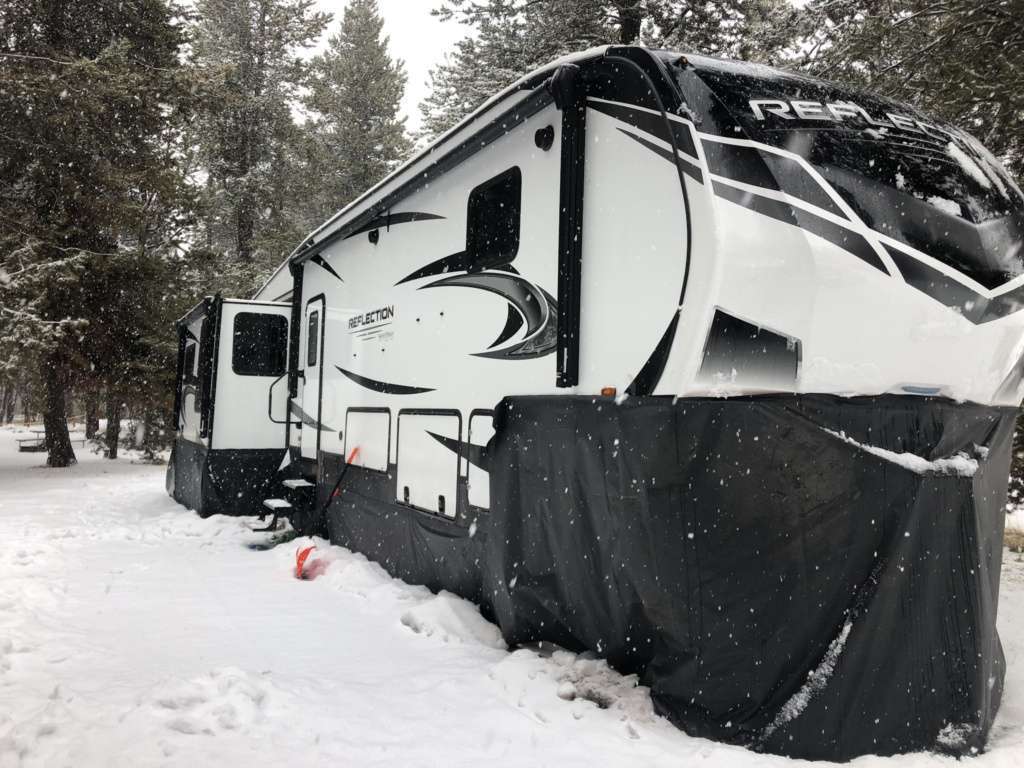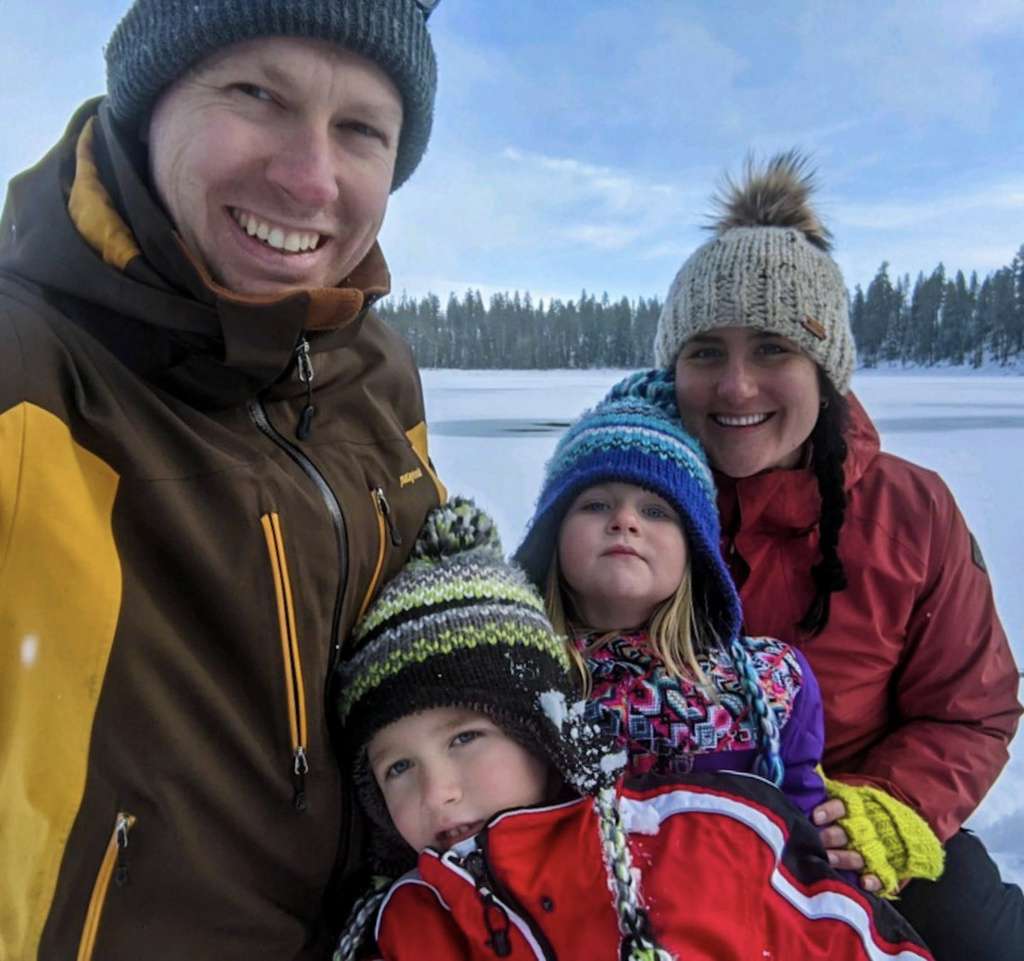Few people have a more diversified portfolio when it comes to custom car builds than...
Read MoreMENUMENU
Menu
Braving the winter elements in an RV requires planning and preparation. It’s important to consider the conditions you may encounter and plan how to stay safe and warm in a winter environment. Here are a few tips and tricks for enhancing your winter RV camping experience.
When considering RV camping in the winter, one of the biggest questions is probably, how do you keep the RV warm and toasty? Generally RVs lack the insulation like houses have and aren’t made for cold temperatures. Luckily, there are a number of things you can do to your rig to keep it warm.
Insulation is key to keeping an RV warm in the winter. Insulate windows with plastic on both the outside and the inside. Then use thermal drapes, especially on any north-facing windows, or use quilted or polar fleece material; tack the material to the walls with velcro if possible to prevent drafts. Any windows not used for light can be covered with rigid foam insulation as well. Weather strip around doors and cover the door with a heavy blanket or insulated drape to reduce cold air leaks.
Cover vent openings with RV vent plugs made especially for this purpose, or use foam-board insulation cut to fit with duct tape wrapping to strengthen the board. Also, leave a “handle” so that the vent cover is easily removable for ventilation when needed.
Insulate around all plumbing and electrical openings to the outside. Use a low-expansion spray-in foam so there is no potential for damage to pipes or wires. Stuffing insulation in holes only keeps cold out if the leaks are sealed first.
Slide-outs can be covered on the sides with rigid foam taped to the sides. If you cover the slide-out roof, make sure you angle the insulation so water flows away from the RV. Heat from the inside will melt snow that accumulates so snow removal from the RV slide-outs (and the roof) is important to avoid creating damage.

Slide-outs can be covered on the sides with rigid foam taped to the sides. If you cover the slide-out roof, make sure you angle the insulation so water flows away from the RV. Heat from the inside will melt snow that accumulates so snow removal from the RV slide-outs (and the roof) is important to avoid creating damage.
People and pets create moisture in an RV when the weather outside is cold and the inside of the rig is warm. Condensation will form on windows and walls with the potential for creating an unhealthy environment. Try to maintain humidity at 30-40%. A good dehumidifier will help control the humidity level in your RV.
Supplement your furnace with a fan-forced ceramic heater which remains cool to the touch and usually offers temperature controls and even oscillation. If your RV has a fireplace, use it to not only give ambiance, but to offer an additional heat source. Consider throw rugs to insulate floors.
Flannel sheets, down comforters, and pets and people to cuddle are also great to help keep you warm in winter RV living!

Flannel sheets, down comforters, and pets and people to cuddle are also great to help keep you warm in winter RV living!
Special attention needs to be given to your solar system as well. Go Power! offers these tips for temperatures below 32℉;
While some RVs are “all seasons”, most are not adequately insulated for long periods of exposure to freezing temperatures. Any external showerheads or faucets that are not used in winter should be drained and protected from the elements. Since RV pipes lie mostly underneath the motorhome, keeping pipes from freezing is essential. One of the best ways to do this is with heat wrap or insulation around the pipes. Also, make sure there is a cover over the water source if you have hook-ups and invest in a heated water hose. Leaving a drip in faucets will also help prevent pipes from freezing, as will keeping cupboard doors under sinks open to allow the RV’s heat to enter. You can also just fill your fresh water tank and eliminate a hose hook-up altogether.
The grey and black tanks should be insulated if you are going to winter in your RV. Electric holding tank heaters will reduce the risk of waste matter freezing, as will keeping the tanks closed and only draining periodically. Using PVC piping rather than flexible hosing, which can easily break if it becomes brittle from extreme cold, will provide additional protection.
Skirting your RV is imperative for winter camping or living. Keeping the underbelly and the bays with batteries, the pipes and fittings, the valves and hoses from freezing requires keeping the underside of the RV warm. Skirting will also assist in keeping the inside, especially floors, warm as well. Choices for insulation include vinyl, custom or DIY made from tarp vinyl, clear plastic, or recycled billboard vinyl; inflatable air skirts; foam board, and plywood or particle board. There are innumerable videos and DIY blogs on how to skirt your RV for winter.
Commercial skirting is available and can be professionally installed. The pros of a professional installation are appearance, convenience, environmental friendliness, and re-usability. The cons are cost, locating someone to install it, and the inevitability of having to put it on yourself once you reach your destination.
Our choice was DIY skirting made from recycled billboard vinyl attached by heavy duty hook and loop fasteners. While it took some labor to skirt our fifth wheel, the recycled billboard vinyl worked well keeping out the cold for the time we were in winter temperatures.
Winter RV camping can be challenging, but with a little planning and preparation, you can brave the elements and find a whole new world opens in a winter landscape. Bundle up and enjoy!
Watch product troubleshooting videos, read the latest in company updates, and stay up-to-date on trade-shows and events.
Few people have a more diversified portfolio when it comes to custom car builds than...
Read MoreGo Power! Wins Gold for Favorite RV Solar Product in the 2024 Wildsam Reader’s Choice...
Read MoreGo Power! | Dometic at the 2025 Florida RV Supershow Get Ready for the...
Read More
Get news, product specials, and event invites directly to your inbox.